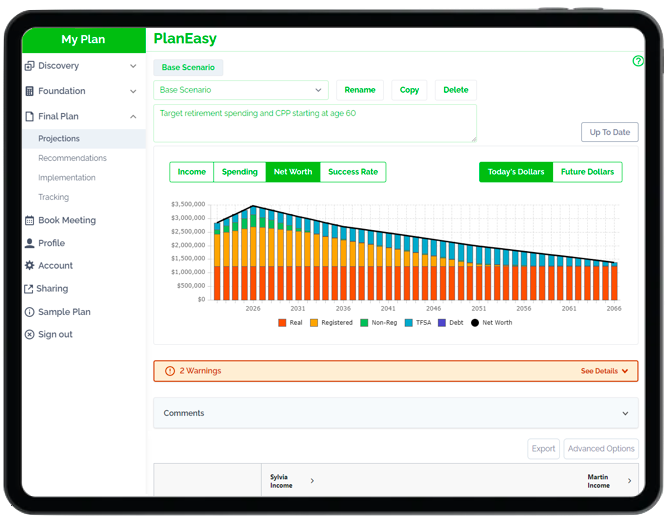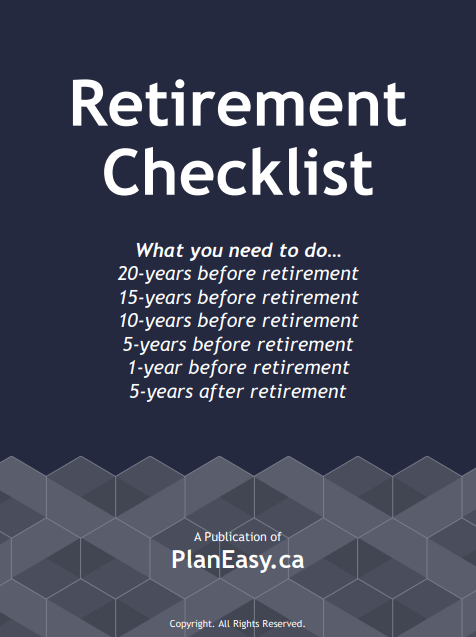Understanding TFSAs:
The 8 Benefits
(And 3 Drawbacks)
of TFSAs
Tax-Free Savings Accounts (TFSAs) are relatively new. They were introduced just over 10 years ago in 2009. Even though they’ve only been around for a relatively short time they’re already the most used out of the major tax-sheltered accounts. There are over 5.5 million households in Canada that have an active TFSA account.
(Authors Note: I love it when people use their tax-sheltered accounts. Good tax planning is a key component of any financial plan and can add $100,000’s to your net worth)
The average usage rate for the TFSA is pretty impressive at 40.4%. This is relatively consistent across both age and income. The highest usage rate is in Ontario where over 45% of the households are using a TFSA. The median contribution to a TFSA in 2016 was $5,765.
All-in-all these are impressive numbers for a relatively new tax-sheltered account.
Given the high usage rate the TFSA must be pretty great, right?!?!
In this post we’ll cover exactly how a TFSAs works, the benefits of a TFSA, as well as some of the drawbacks of a TFSA.

Understanding TFSAs: How They Work
TFSAs are as simple as it gets. Contributions are made post-tax and they grow tax-free. They help you avoid tax on your investment growth.
The TFSA contribution limit is $6,000/year for each person over the age of 18 and rises each year (see what it could be in the future). Unused contribution room carries forward. To check your contribution room sign into the CRA online portal or request a TFSA Room Statement from the CRA. There is no lifetime limit with a TFSA, your contribution room continues to grow every year!
TFSAs provide the biggest benefit when you put ‘high growth’ investments inside of your TFSA. Don’t be fooled by the name “Tax Free Savings Account” you can put almost any investment inside a TFSA. This includes stocks and bonds.
Think of a TFSA like a magic box where taxes don’t apply. Put any investment inside your TFSA and magically investment gains become tax free.
Withdrawals from a TFSA can be made at any time. Whatever you withdraw will get added to your contribution room the following year, so that tax free space never gets lost (unlike the RRSP).
All this makes TFSAs great for retirement planning. It forms the cornerstone of the simple retirement plan.
There are lots of benefits with TFSAs but also some drawbacks too.
Benefits:
Tax-Free Compounding:
Investments inside a TFSA grow tax-free. This lets your investment compound faster without the drag of annual taxes. How much is this tax-free compounding worth? Potentially $100,000’s.
Someone who contributes about $3,500 to their TFSA each year for 40 years will have an additional $358,963 in tax-free growth!
Check out the two charts below for more details.
No Barrier To Withdrawals:
TFSA withdrawals can be made at any time and without any withholding tax.
Share Contribution Room With A Spouse:
Because TFSA contributions are made with post-tax dollars the government doesn’t care if gift money to your spouse to make contributions to their TFSA. This means you can share contribution room with your spouse and maximize their tax-sheltered space too. (You cannot do this with an RRSP, unless you want to get audited that is)
Contribution Room Is The Same, Regardless Of Income:
Regardless of your income, the contribution room for a TFSA is the same. This is great for low and moderate income earners. For these households it’s possible to tax-shelter a higher % of their income. The average Canadian family can shelter 32% of their income in tax sheltered accounts. Thanks to the TFSA, this increases for low income earners.
Contribution Room Returns The Next Year:
When you make a withdrawal from your TFSA the contribution room will come back the following year on Jan 1st. This means you can use a TFSA to save for short/medium term goals like a down payment or a wedding.
No Mandatory Withdrawals:
There are no mandatory withdrawals with a TFSA. You can let a TFSA grow tax-free for your entire lifetime. RRSPs have forced withdrawal rates after age 71.
Withdrawals Won’t Impact Government Benefits:
Making a withdrawal from a TFSA won’t count as income. This means there is no impact on government benefits.
This is especially helpful for low-income seniors who receive benefits with high claw back rates, sometimes as high as 50% to 75% of the next dollar earned (read more about high marginal effective tax rates for retirees).
No Tax Upon Death:
Because TFSAs are tax-free there is no tax upon death. This means you can transfer your assets to your children without any impact from taxes.
Related Posts:
- 8 Ways the TFSA Could Change the Future
- Our $1 Million Goal: How We’re Using Our TFSA For Retirement
- Reaching Financial Independence Tax Free
TFSA
Annual $3,517 Post-Tax Contribution
$865,006 Cumulative Withdrawals (After-Tax)
[weblator_chart id=”29″]
Taxable
Annual $3,517 Post-Tax Contribution
$506,043 Cumulative Withdrawals (After-Tax)
[weblator_chart id=”24″]
Blog post continues below...
Advice-Only Retirement Planning
Are you on the right track for retirement? Do you have a detailed decumulation plan in place? Do you know where you will draw from in retirement? Use the Adviice platform to generate your own AI driven retirement decumulation plan. Plan your final years of accumulation and decumulation. Reduce tax liability. Estimate "safe" vs "max" retirement spending. Calculate CPP, OAS, GIS, CCB etc. And much more!
Start your retirement plan for just $9 for 30-days!
You deserve financial peace of mind as you enter retirement. Start planning now!

Drawbacks:
No Barrier To Withdrawals:
Although this is a benefit I believe it is also a HUGE drawback of TFSAs. Retirement savings inside a TFSA are more likely to be “raided” because TFSA withdrawals can be made at any time and without any withholding tax.
No Income-Tax Reduction:
Unfortunately, TFSA contributions can’t be used to lower your taxable income. This means there is no way to decrease your income tax when contributing to a TFSA. For high income earners this makes an RRSP more appealing.
No Protection From Creditors:
Another big drawback is that TFSAs aren’t protected from creditors. If you’re involved in a law suit or bankruptcy your TFSA can be confiscated by your creditors. If you use a TFSA for your retirement savings they could unfortunately take it all.
RRSPs on the other-hand are protected from creditors.
You can protect yourself from this possibility with strong vehicle/property insurance and also umbrella insurance. Still, this is a risk with using TFSAs as your main retirement account.
Join over 250,000 people reading PlanEasy.ca each year. New blog posts weekly!
Tax planning, benefit optimization, budgeting, family planning, retirement planning and more...
Join over 250,000 people reading PlanEasy.ca each year. New blog posts weekly!
Tax planning, benefit optimization, budgeting, family planning, retirement planning and more...








Not extremely surprised, some households with higher income could be focusing on their RRSPs, new grads may have been accumulating TFSA room since age 18 but are focused on paying off debt. There is certainly a lot of opportunity for tax free growth out there…
Is this only available in Canada? I see references only to Canada.
Yes, unfortunately the TFSA is only a Canadian account Sharon.
Hi Owen, thanks for the article – do you know if there are there any advantages to paying out a TFSA to heirs / beneficiaries before a person passes?
Hi Lindsay! That’s an interesting question. If the intention is to always gift the contents of the TFSA in an estate, perhaps to adult children/heirs and not a spouse, then I can see a situation where the gifts could happen earlier, especially if the adult children have TFSA contribution room that they are not taking advantage of (or will not take advantage of in the foreseeable future). The benefit of gifting the TFSA to the beneficiaries early is that these gifts would be smaller and the gifts could grow inside the heirs TFSAs. If the TFSA is gifted later, it may have grown to become so large that it can no longer fit inside the beneficiaries TFSAs using their accumulated contribution room. The downside of course is that once the gifts are made there is no longer any control over the funds.
Congrats on your success so far with the TFSA and RRSP Christopher, you’ve faired well during the recent correction!
So myself and my wife just started a TFSA today. We put the maximum $81,500 each in. I’m hoping in a few years it’ll grow. I was in a motorcycle accident and can’t work. I got a “settlement” from the other party. I also put some money in “Fidelity” I’m hoping for a good investment/return. I’m only 39 so LOTS of years left(I hope)
Hi Mac, I’m sorry to hear about your accident! I rode motorcycles for years and couldn’t even imagine what it would be like to be in an accident like that.
TFSAs are great for many reasons. If you’re just getting into investing, then make sure your investment fees are reasonable. You ideally don’t want to give up 30% of your investment return to high mutual fund fees. Check out this blog post for 4 simple investment options to consider…
https://www.planeasy.ca/4-easy-ways-to-start-investing/
I had understood that TFSAs, if you name a beneficiary, is safe from creditors. So if you don’t name one, it goes to estate as do regular bank accounts. Leaving it to the estate leaves it open to taxes and creditors. Am I correct?
Hi Nirmal, while it is true that a beneficiary designation will keep the assets outside of the estate, the TFSA is not protected by creditors simply by having a beneficiary designation.
Can you purchase etf’s within a tfsa ?!
Hi Jordan, yes, you can definitely purchase ETFs within a TFSA.
Hi Owen, thank you for breaking down the basics with such clarity.
I had two related questions if you could kindly advise on the same. We’re new immigrants having done with our soft-landing in 2022, and planning to move permanently in 2024 and currently back in our home country. Would our TFSA contribution pool be calculated from 2022? That is, 2022+2023+2024. If that’s the case, how should we treat our cash savings (which would be in excess of contribution pool beginning from 2022) that we will be bringing over to Canada (since TFSAs are post-tax)?
I would appreciate your guidance on the same. Thank you!
Hi Eissa, it’s difficult to comment without knowing more.
In general TFSA contribution room is based on residency in Canada, so you would need to determine if you were technically a resident or a non-resident during that period. There are important criteria when determining residency so that would be the first step.
Are TFSA’s protected from nursing home costs. In other words if you are moved to extended care to a nursing home or similar, they have access to your chequing and savings accounts for ones care if required. Is your TFSA account protected with a beneficiary designation added? (In Saskatchewan)
Hi Lynn, perhaps I’ve misunderstood your question, but I am not aware of any protections that the TFSA has related to nursing home costs.